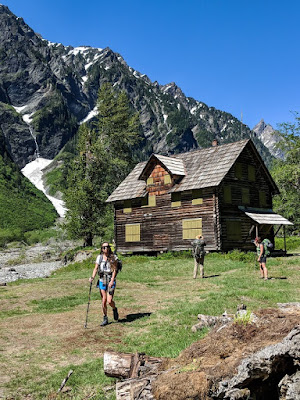Knowing how to navigate your way through your hike is critically important, whether you are taking a short-day hike or a longer trek through the backcountry. The tools that you choose to take may depend on the type of trip you are taking. If you are taking a short-day hike, for example, you might prefer to get around with just your map and a compass, and your Personal Locator Beacon (PLB). For a more complex, longer hike you might want to include your GPS and altimeter.
As always, be sure to file a trip report and tell someone the exact location of where you plan to go and when you plan to return along with the route you plan to hike.
Top Five Navigational Hiking Tools
There are basically five different types of essential navigational tools commonly used by hikers:
Map - be sure you know how to read a topographic map which should accompany you on any hike beyond a simple walking path. You should understand the map details, how the scales work and how the contour lines help you to visualize the terrain.
Compass – considered the most important piece of navigational gear, every hiker needs to have a compass and know how to use it. A compass weighs next to nothing, takes no space at all and works without batteries. You can use it with your map or without. Learn how to use a compass from the American Hiking Society and know the importance of declination.
Altimeter watch – an altimeter works by measuring the barometric pressure combined with GPS data to provide an estimate of your elevation. You should be able to quickly adjust the elevation reading if you make it a summit or known landmark with an established altitude. It can be nice to have one that records so you can track your progress, this is also helpful information to know where you are on the map.
GPS device – many hikers choose to use the GPS on their smartphone, which is fine as long as you have a rugged case, a signal and a backup battery supply.
Personal locator beacon (PLB) - this device can notify emergency personnel if you have an emergency in the backcountry. When activated, the device will send your location via GPS and satellites. A PLB is a nice backup to carry and does not rely on cell phone signals.
Make sure that you understand proper navigational techniques and how to use each of the most important tools. Make your hike even easier with quality hiking trekking poles to take some strain off your joints and help you glide along the trails. You can pack some lightweight, foldable camping chairs to stop and rest along the way. Cascade Mountain Tech offers lightweight camping chairs perfect for backpacking or camping chairs with something for everyone.
Cascade Mountain Tech offers high-quality hiking and camping gear, built to last to join you on many memory making adventures. Our mummy sleeping bags will keep you warm at night and the roto-molded cooler keeps your food chill with ice that lasts up to 10 days. Contact us for quality trekking poles and with any questions on hiking safely in the backcountry.

No comments:
Post a Comment